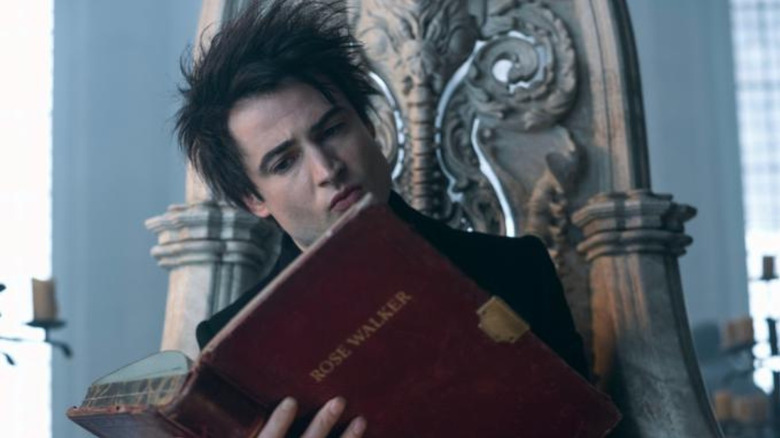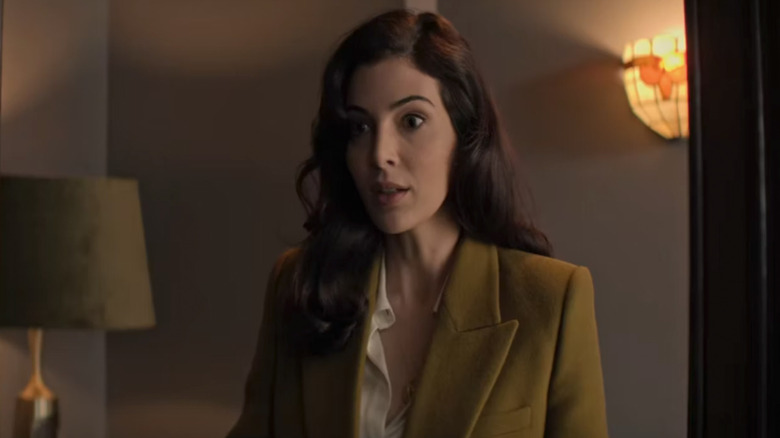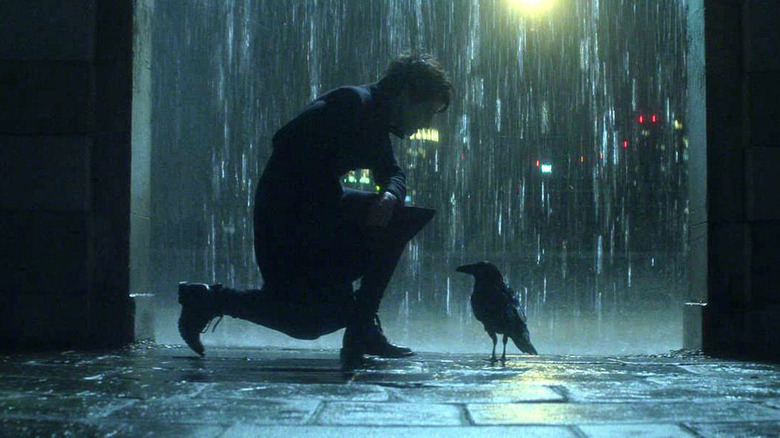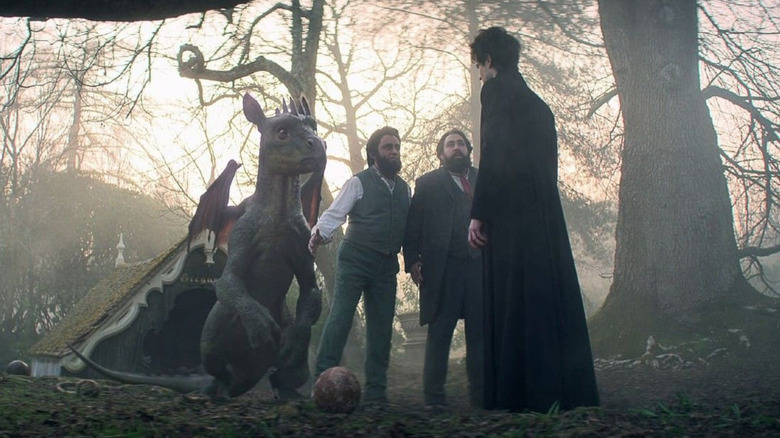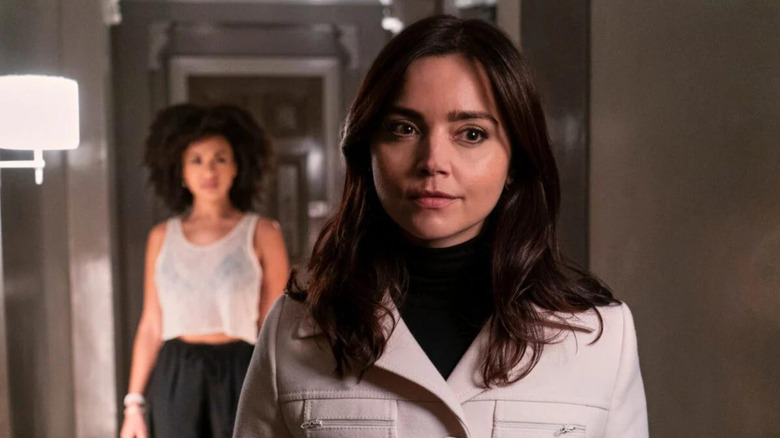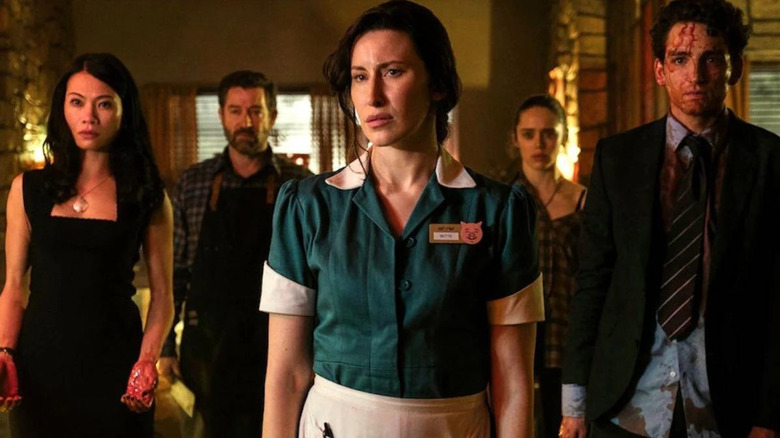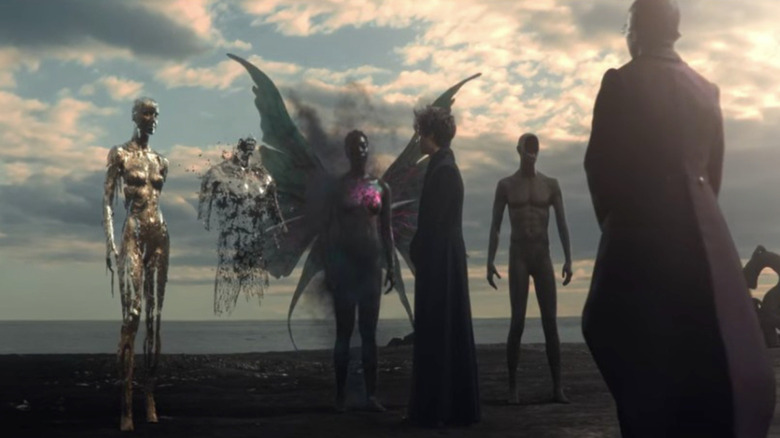The Biggest Differences Between Netflix's Sandman And The Original Comic
After more than 30 years of waiting, "The Sandman" has finally been adapted for the screen courtesy of Netflix. The first season of a series based on the comic series was released in August, with its episodes being comprised of stories from the first two arcs of the original comics. "Preludes & Nocturnes" and "The Doll's House" are extremely important comic arcs that set up a great deal about the world of "The Sandman," and are must-reads for anyone interested in learning about the expansive story.
Needless to say, it was great that the Netflix adaptation of "The Sandman" kept with the original comic order and started its first season with these two stories. It gives hardcore fans the chance to see these great stories on the screen, while not bombarding new viewers with the heavy lore that comes in later arcs. Of course, however, there were some things that needed to be changed about the stories when adapting them to live action. Some of these were for the best, while others might be more questionable depending on who you ask. Here are some of the most significant changes.
Absence of all DC references
Okay, so this entry was bound to be mentioned, which is why we're getting it out of the way now. It seemed pretty obvious from the beginning that "The Sandman" would not be a part of any DC Universe, but you can definitely feel their absence in the show. One of these retcons is the elimination of Arkham Asylum, the famed facility that held John Dee in the "Sandman" comics, as well as in various "Justice League" issues. The show places him in a generic mental facility that is far too clean to possibly replicate Arkham. Maybe this was on purpose?
The only DC character that is mentioned throughout the series is Constantine, and even that is a stretch due to the character being gender-swapped (more on that a bit later). That means that Batman rogue Scarecrow, who meets with Dream and John as the former is returning him to Arkham, is not present or mentioned. Batman himself, nor the Justice League are mentioned either.
These absences also mean that Lyta Hall (Razane Jammal) gets a major retcon — while she still finds herself suddenly impregnated throughout the "Doll's House" episodes, her half-Amazonian side is completely erased, having her be a regular human instead. She is also now a friend of Rose Walker (Vanesu Samunyai), whose Vortex abilities result in the unexpected child forming inside of Lyta.
Matthew the Raven gets a larger role
The story of Matthew Cable is one that likely needs a separate article altogether, but the gist of it is that he is a former ally of Swamp Thing reincarnated as a talking raven. The Swamp Thing connection is not mentioned in the television adaptation of "The Sandman," with only his death being mentioned, but Matthew in his Raven form (Patton Oswalt) gets a lot to do throughout the first season compared to his comic counterpart.
The first official appearance of Matthew the Raven was in issue #11 of "The Doll's House" arc, where it is revealed that Dream sent him to monitor the burgeoning Vortex. While this plot detail remains in the show, he makes his first appearance much earlier in the third episode, having been sent by Lucienne (Vivienne Acheampong) in order to help Dream (Tom Sturridge) find his belongings. While he originally shrugs off the Raven's help, Matthew serves as a companion to Dream throughout the series, often giving straight-laced commentary on the absurd things happening around him.
Some significant scene rearrangements
Fans may realize that a couple of pivotal scenes are not placed in the order they are in throughout the comic. One instance takes place when Dream returns to his domain of the Dreaming, only to find it crumbled in his absence. While this return takes place at the very beginning of the show's second episode, it doesn't happen until around halfway through the first issue of the arc entitled "Imperfect Hosts." This shift has resulted in the introductions of Cain (Sanjeev Bhaskar) and Abel (Asim Chaudhry) getting rearranged, as well — while the second issue introduces the two characters immediately, the show has Dream and Lucienne meeting with them after the two reunite in the Dreaming's ruins.
The final confrontation between John Dee (David Thewlis) and Dream at the end of "24/7" also was greatly reduced. While an entire issue of the comic was dedicated to their battle, it only takes up a few minutes of screen time at the end of the episode, finally ending with John Dee's ultimate, dream-filled fate.
However, no other scene was more rearranged apart from the first meeting between Dream and Hob Gadling (Ferdinand Kingsley). The flashback to their meeting in the 13th century was originally during "The Doll's House" arc as an aside. However, the show combines it with "The Sound of Her Wings," with Dream having a flashback to the meeting after reuniting with his sister, Death (Kirby Howell-Baptiste).
Big changes to John Dee and Ethel Cripps
While we're on the subject of John Dee, let's talk about the changes made to both him and his mother, Ethel Cripps (Joely Richardson). For starters, John's motivation for using the Dreamstone differs greatly from that of his comic persona; he isn't necessarily a megalomaniacal criminal genius, but rather a man plagued with trauma that wants to use the Dreamstone to eliminate that pain not only for himself but everyone in the world. However, given how his motivations are still pretty self-centered, maybe he still is a bit of a megalomaniac. He also looks like a relatively normal guy rather than one decaying from his inability to sleep or dream.
If that sounds like a big departure, then the changes made to Ethel are something different altogether. She still remains a member of the Order of Ancient Mysteries and had taken the possessions of Roderick Burgess (Charles Dance) like she did in the comic. However, now she had used the Amulet of Protection to remain youthful over the years. She also used the ruby to achieve success in her career as a thief. Her death is also significantly different from hers in the comic. While she dies at some point in the comics after her son escapes Arkham, she sacrifices herself in the show by giving the Amulet of Protection to him, causing her to rapidly age in the process.
Johanna and Rachel's relationship isn't the same
Of course, one of the most glaring differences between the Netflix series and the "Preludes & Nocturnes" arc is its handling of the Constantine bloodline. The two presents two versions of Johanna Constantine, both played by Jenna Coleman: the 18th-century aristocrat interested in the occult, and the snarky and pessimistic modern occultist with steadily increasing fees. Arguably the most significant change to modern-day Johanna is not only her gender, but the way the show handles her relationship with her ex-girlfriend, Rachel (Eleanor Fanyinka). In the comics, John went away for a case only to return and find his apartment ransacked of valuables. He described Rachel as a drug addict who presumably pawned away these valuables for money.
That isn't necessarily the case in the show, however. In the third episode, it is revealed that Johanna was the one who left the relationship, not wanting a non-addict Rachel to be in danger because of her dealings. However, like her comic counterpart, she had accidentally left Dream's sands at her apartment, which she intends to pick up. Unfortunately, Rachel is shown to have similarly succumbed to the allure of the sands, being put to sleep by Dream after he acquires the bag once again.
The adaptation of 24 Hours seems a bit tame
Issue #5 of the original "Preludes & Nocturnes" arc, "24 Hours," is one that is highly regarded among fans as one of the best "Sandman" stories ever written. It is a bonafide chiller, one that questions the limits of free will and says that humans can easily become cruel animals if left to their natural instincts. Needless to say, this particular story was one that fans were nervous about when the show was announced, and for the most part, they didn't have to worry when the episode titled "24/7" was released.
While a good episode on its own, it still doesn't exactly feel the same as its comic counterpart. Rather, it actually felt a bit tame, maybe even a little underwhelming when compared to how intense the original story gets. In an effort to not come across as crude, the group, well, love-making from the original comic is reduced to separate twosomes throughout the restaurant. In relation to the previous observation regarding John Dee's different characterization, he does not make the patrons of the restaurant worship him or even regard him at all. These removals make the overall vibe of "24/7" feel pretty underwhelming, which is kind of a shame given the pedigree of the story.
Rose and Jed's mother is more prominent ... and nefarious
Rose Walker is arguably one of the most important characters in both "The Sandman" comics and the show, especially given how she is unknowingly an Endless-destroying Vortex. However, her family history gets changed a bit for the show adaptation, particularly the impact her mother plays.
At the beginning of "The Doll's House" comic arc, Rose Walker arrives with her mother, Miranda, to Sussex, England, to meet a previously-unknown family benefactor. However, when the time comes for the visit on the show, Rose is instead accompanied by her friend, Lyta. This is because, in the show's timeline, Miranda Walker (Andi Osho) falls ill at some point beforehand and passes away, although her daughter tells her friend that she was quite excited about the trip when she was alive.
However, she ends up still being alive in a tragic way. She was reincarnated as Gault (Ann Ogbomo), a nightmare created by Dream that ends up escaping and attaching itself to Jed (Eddie Karanja), Rose's young and abused brother. After Rose's great-grandmother, Unity Kincaid (Sandra James-Young) sacrifices herself by harboring the Vortex, Jed is awoken from his imprisonment, and Dream is able to alter Gault into a dream rather than a nightmare.
